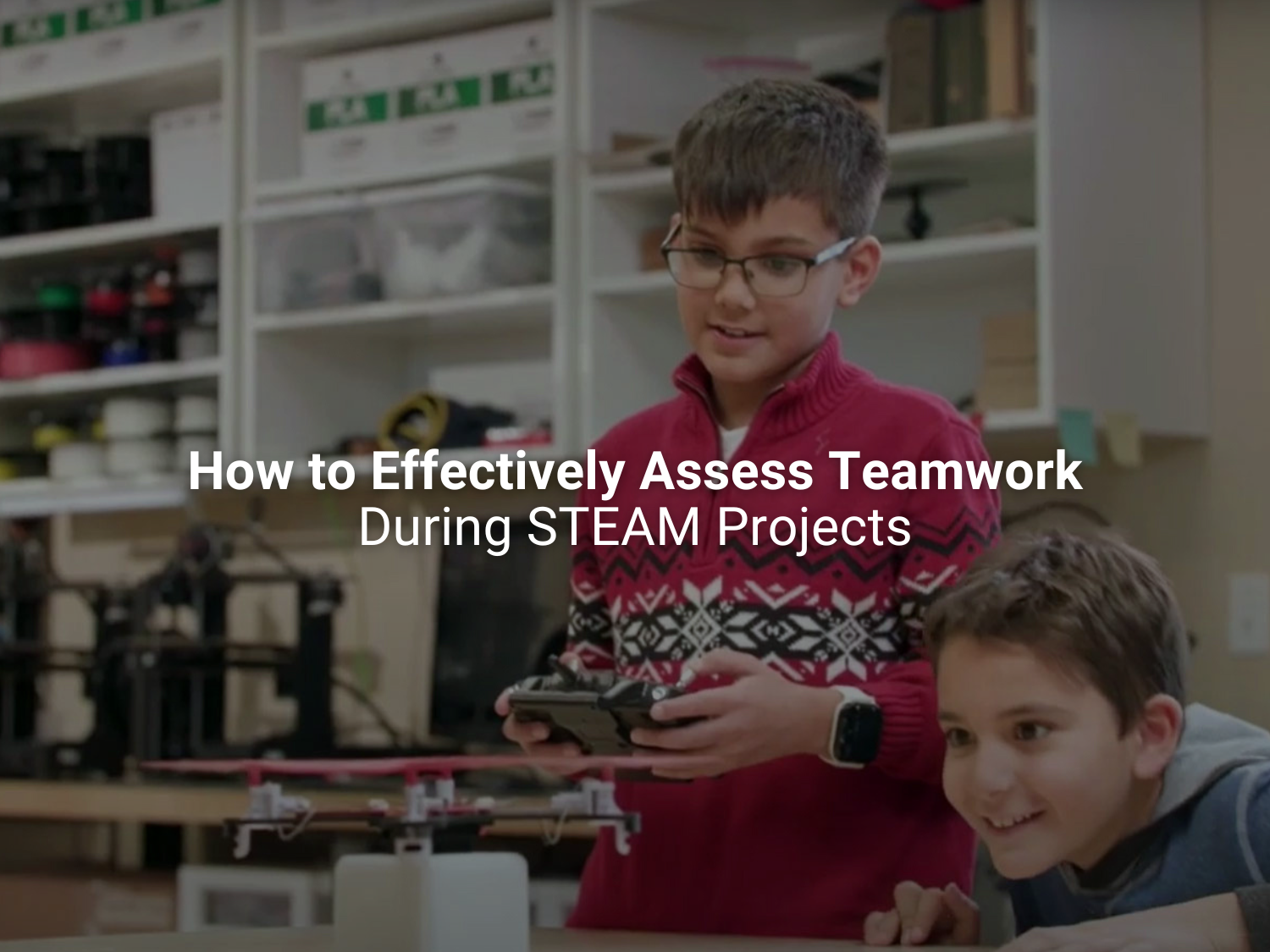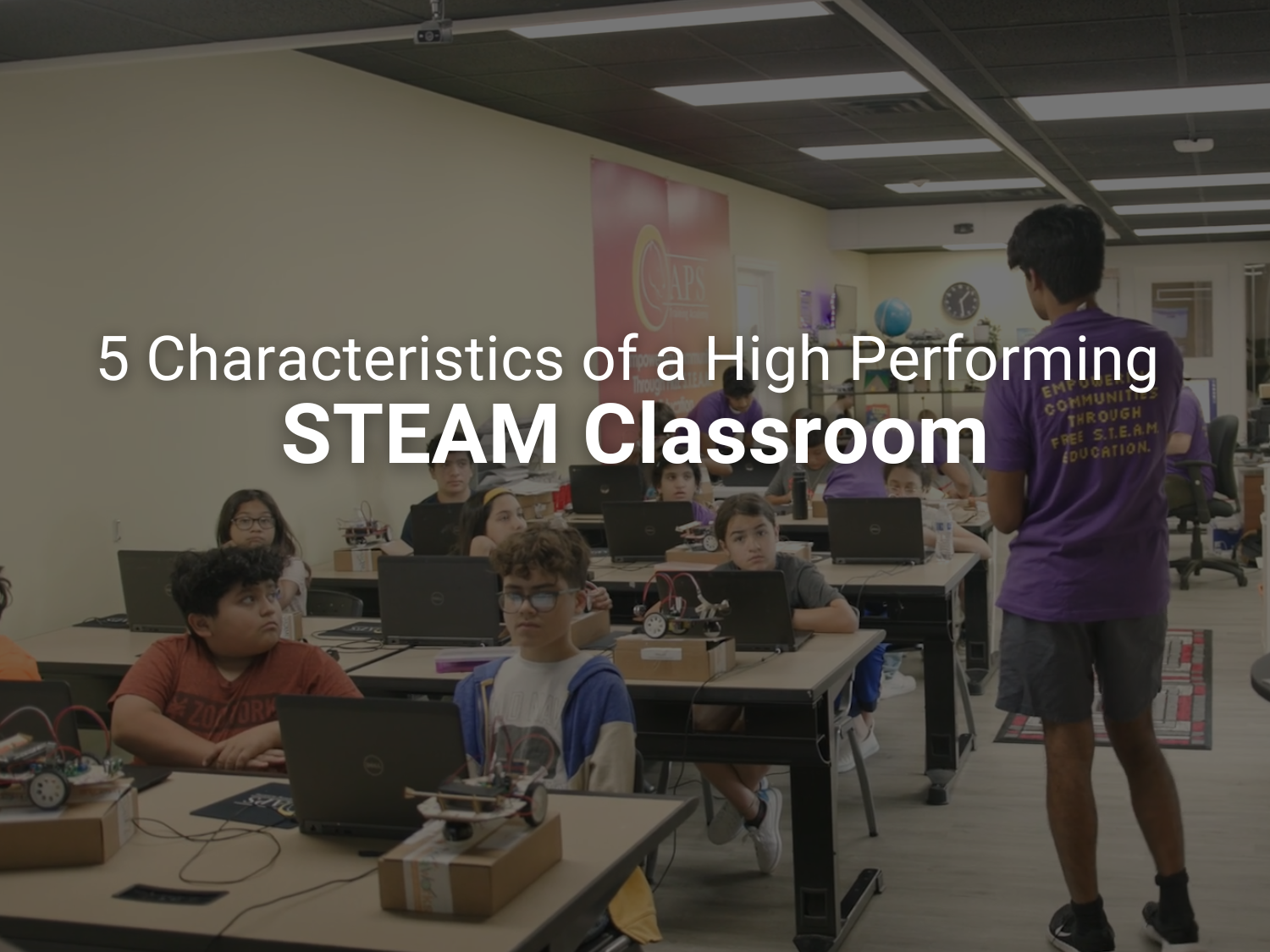How to Effectively Assess Teamwork During STEM Projects (and STEAM)

Teamwork is a vital ingredient in a successful STEAM classroom. Not only does it help students learn the STEM material faster, but it builds important skills like communication, compromise, and collaboration. Despite the many benefits of group work, it's common for educators to find it challenging to assess how well students are employing teamwork strategies, especially when there are several small groups working in one classroom. In this article we’ll explore simple ways to effectively assess teamwork during STEAM education. Additionally, download a free resource designed to help STEAM educators increase teamwork between students in the classroom by distinguishing chatter from productive conversation.
Signs Students Are Engaged in Effective Teamwork
Before educators assess the quality of the teamwork during STEAM projects, it is important to know some of the key elements and signs effective teamwork is taking place. Here are three simple ways educators can quickly gather whether teamwork is being cultivated in the STEAM classroom.
#1 Discourse
Discourse is the number one indicator effective teamwork is taking place or has the potential to take place. A STEAM team that is not talking is a sure sign that there is a disconnect and the group might benefit from an intervention. Without discourse, students will not be able to cultivate an environment of teamwork through purposeful questioning, active participation, collaboration, debate, communication, etc. It is key that students are comfortable and motivated to express their thoughts, share their findings, and present new ideas when working on STEAM projects.
#2 Differing Perspectives
An indication that productive teamwork is occuring is that everyone appears to be engaged. With so many students approaching the same problem through their own lenses of experience, knowledge, and understanding, there should be plenty of unique strategies, ideas, and observations during each STEAM project. As students share their unique perspectives, they will learn new ways to problem solve from one another while forming bonds with their classmates. Learning through real examples presented by one another helps solidify knowledge from each concept.
#3 Diverse Problem Solving
STEAM projects require more thinking and creativity than simple arithmetic. If a group of students are truly working with a teamwork mindset there will be a variety of solutions and strategies pitched and considered. When working in a team, students should quickly learn that there is no “one way” to solve complex problems in STEAM. By working together, they enforce that lesson with each new idea shared. A productive team builds consensus and works together to help achieve shared goals.
How to Enhance and Assess Teamwork During STEM Projects
Clearly Define Expectations
Providing clear expectations for an assignment helps both students and educators alike. By establishing and clarifying expectations, teachers are able to more easily assess and grade the teamwork taking place in the classroom. Defining project expectations provides students with a blueprint to successfully work together. One expectation educators need to set during STEAM projects is that all students work at improving and using the skills that will make them a good teammate. Some teamwork skills to review include active listening, clear communication, respectful debate, purposeful questioning, engagement, positivity, etc. Additionally, providing rubric and assessment details at project kick-off will set students up for participating in effective teamwork.
Grab our STEAM Teamwork Rubric and set expectations for your students before your project even starts!
Set Project Milestones and Deadlines
Timelines are met through teamwork! Giving students a timeline for completing their learning objectives ensures they work together as a unit to reign in their creative thinking and brainstorming to truly tackle problems and accomplish tasks. Project milestones and timeframes also allow educators to quickly assess whether groups are engaged in productive STEAM teamwork. Deadlines should be clearly communicated to students at the start of each STEAM project in order to help them plan and execute their process. Students working together with effectiveness and efficiency will be able to meet project milestones and deadlines. A group that struggles to complete tasks within the designated time frame indicates optimal teamwork is not occurring amongst the students.
Peer Review Evaluations
Peer review evaluations are an effective tool for teachers to assess how well teamwork is going during STEAM. Peer evaluations encourage students to use skills like critical thinking, tactful communication, and productive collaboration. This also creates an opportunity for students to learn ways to improve their problem solving skills from their fellow classmates. Incorporating peer evaluations into the early stages of a project helps teams discover areas for improvement and act on them immediately. Educators should consider adjusting grades based on peer evaluations to add weight to the teamwork elements of STEAM projects. Consider asking “What contribution has each member made that benefitted the group? What additional action or actions could members take to help the group accomplish its goal?”
Personal Reflection Assessments from Students
Have students compile and submit a reflection on their own personal contributions. Personal reflection and assessments completed by students will help educators quickly assess how each student perceives and participates in teamwork. Simple self assessments are a great way to identify which students are struggling to embody the attributes of a good teammate or use skills that will cultivate an environment of teamwork. Additionally, self assessment promotes teamwork. Personal reflection challenges students to consider the importance of collaboration during each step of the project, and it empowers every student to offer their own thoughts and insights. It also helps students develop strong self-awareness, which is an important Social Emotional Learning competency. When students become conscious of their own actions in a group setting, they take a crucial step toward better teamwork and collaboration.
Project Organization
How do your students divide tasks or tackle them together? During STEAM projects, do the groups of students all work together on each step at the same time, or do they find ways to spread the workload across the group? A team that works well together will find ways to streamline the process through organization and delegation.
In Conclusion
Teamwork is a key component to STEAM education and should be assessed throughout the entire process in order to redirect students or make improvements for future projects. Download our STEAM Teamwork Rubric and use it to kick-off your next STEAM project!
Did you know that all TinkRworks STEAM projects have built-in assessments to help you monitor your students’ progress? Try an introductory package of our LaunchPad project and see for yourself.
-1.png?width=350&height=89&name=TinkRworks%20Logo_Learners%20to%20Innovators%20V2%20(1)-1.png)
.png?width=712&height=550&name=Team%20Communication%20(4).png)



